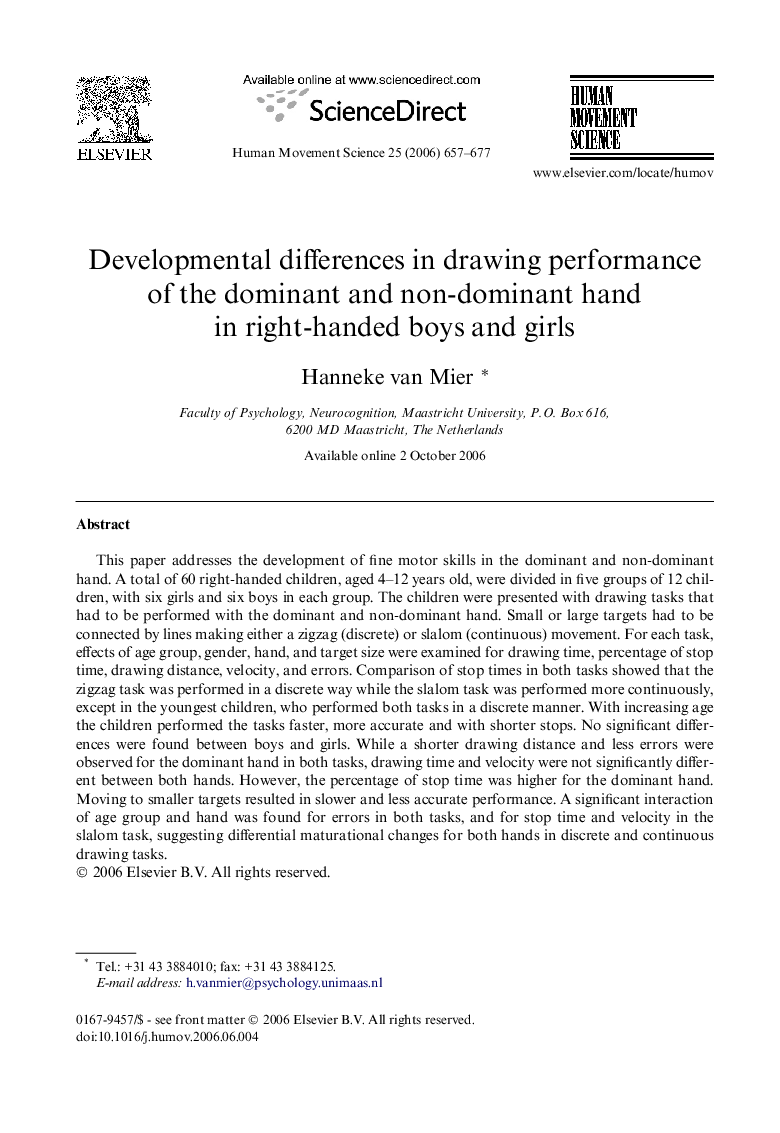| Article ID | Journal | Published Year | Pages | File Type |
|---|---|---|---|---|
| 928931 | Human Movement Science | 2006 | 21 Pages |
This paper addresses the development of fine motor skills in the dominant and non-dominant hand. A total of 60 right-handed children, aged 4–12 years old, were divided in five groups of 12 children, with six girls and six boys in each group. The children were presented with drawing tasks that had to be performed with the dominant and non-dominant hand. Small or large targets had to be connected by lines making either a zigzag (discrete) or slalom (continuous) movement. For each task, effects of age group, gender, hand, and target size were examined for drawing time, percentage of stop time, drawing distance, velocity, and errors. Comparison of stop times in both tasks showed that the zigzag task was performed in a discrete way while the slalom task was performed more continuously, except in the youngest children, who performed both tasks in a discrete manner. With increasing age the children performed the tasks faster, more accurate and with shorter stops. No significant differences were found between boys and girls. While a shorter drawing distance and less errors were observed for the dominant hand in both tasks, drawing time and velocity were not significantly different between both hands. However, the percentage of stop time was higher for the dominant hand. Moving to smaller targets resulted in slower and less accurate performance. A significant interaction of age group and hand was found for errors in both tasks, and for stop time and velocity in the slalom task, suggesting differential maturational changes for both hands in discrete and continuous drawing tasks.
